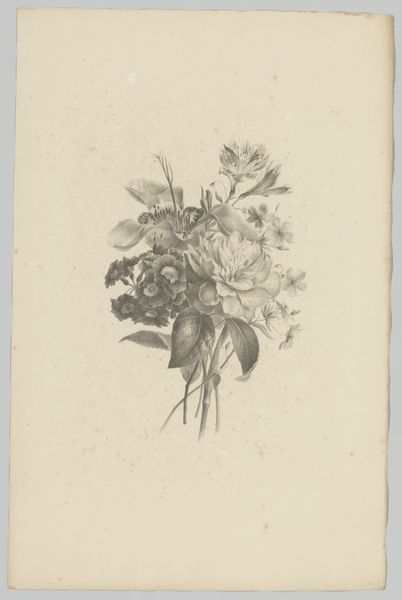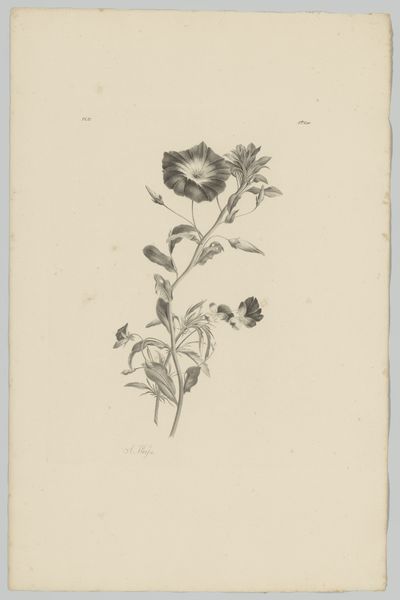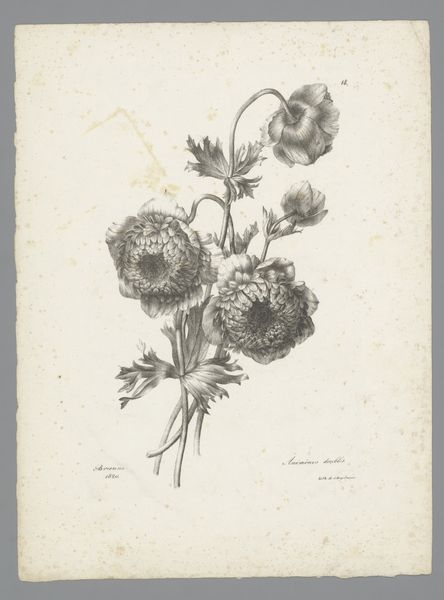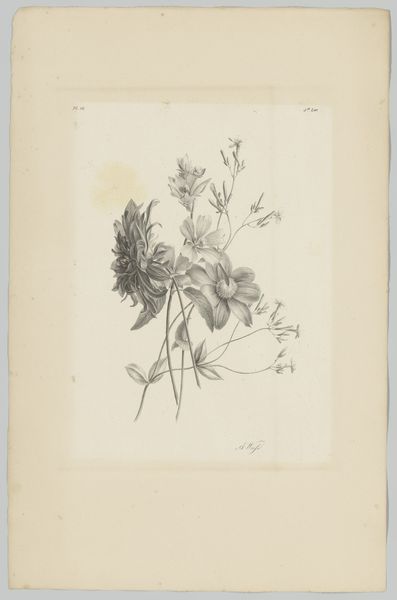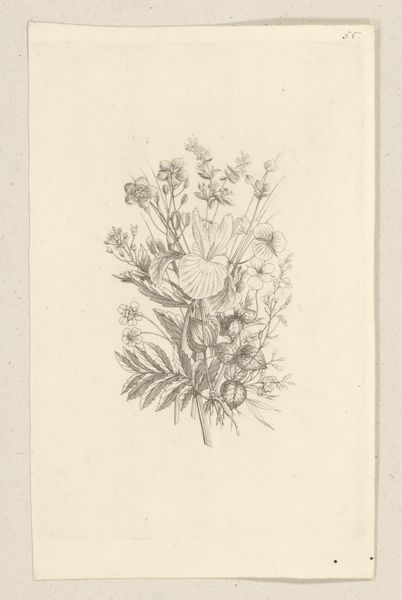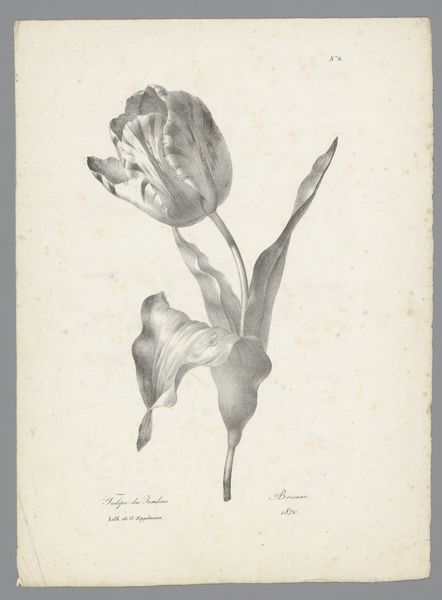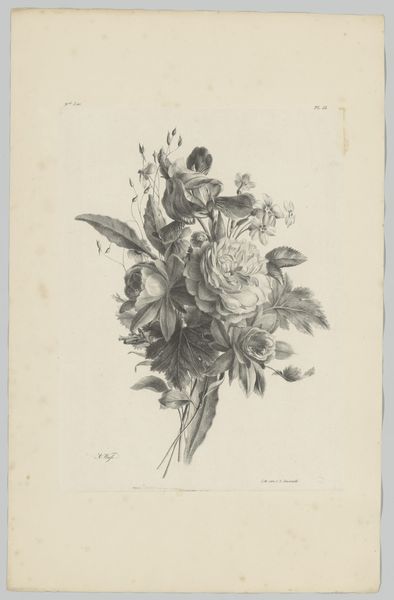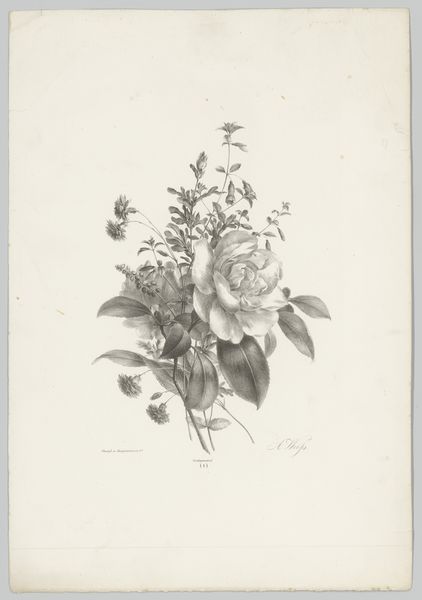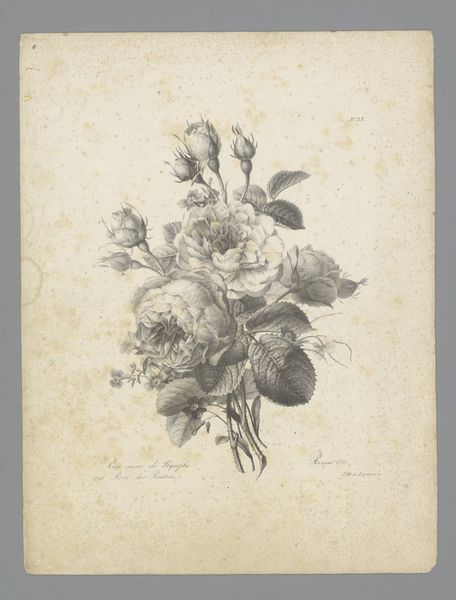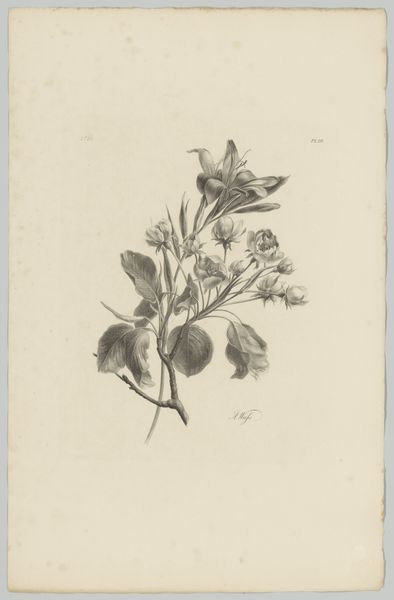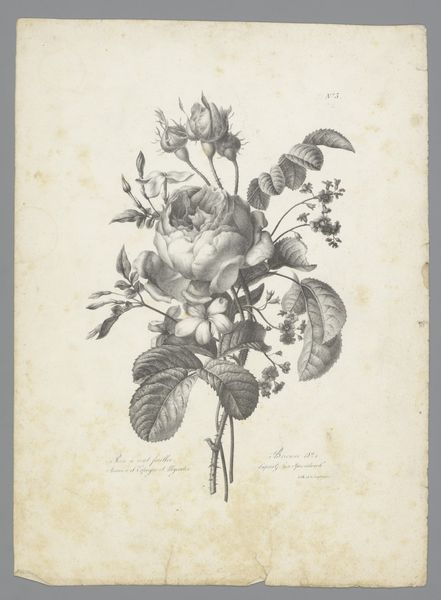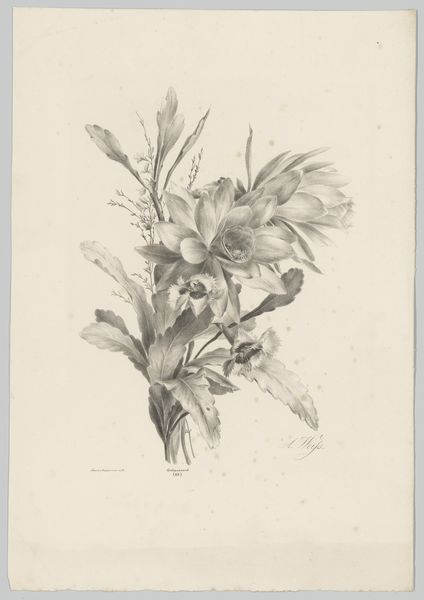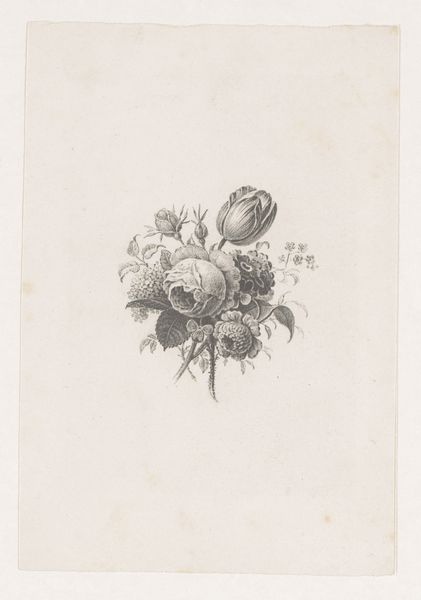
#
childish illustration
#
ink paper printed
#
flower
#
personal sketchbook
#
ink colored
#
sketchbook drawing
#
watercolour bleed
#
watercolour illustration
#
remaining negative space
#
sketchbook art
#
watercolor
Dimensions: height 480 mm, width 308 mm
Copyright: Rijks Museum: Open Domain
Curator: This delicate work, titled "Tulp en andere bloemen," dates from 1820 to 1833 and is currently held in the Rijksmuseum. The artist is Anton Weiss. Editor: My first impression is its subtle vulnerability. The flowers, especially the large tulip, appear so meticulously rendered yet seem almost ephemeral against the bare paper. Curator: Indeed. Weiss's rendering reflects the growing interest in botanical studies and natural history during the early 19th century, which saw increased imperial and commercial interest in botany as ways to discover value in colonised lands. Editor: You can see the skill in the application of ink and watercolour, though. I wonder about the labour involved. It suggests careful study and likely many iterations. What role do prints on paper like this play when communicating botanical discoveries to others? Curator: Precisely. Think of this not just as art, but as a piece of scientific illustration, too. The accuracy would have been paramount. The prints democratized botanical knowledge; it made the visual information regarding foreign plants and resources affordable and available to wider audiences. Editor: It also implies a hierarchy; a master craftsperson, Weiss, creating a matrix that is then printed to give information on resources that were already known by colonised communities. It's all about labour relations and social capital. Curator: Absolutely, these prints would become highly collectible and circulated among specific social groups interested in botany, like hobby gardeners and land owners, creating a specific system for cultural exchange. The value is in how it mediates social connections and solidifies economic power through display. Editor: Looking closer, it’s intriguing how the various blooms are positioned – a singular, grand tulip, alongside almost understated smaller flowers. Weiss's careful material execution is clearly working hard to deliver more than just accurate representations of plants. Curator: I concur. The composition itself, beyond its illustrative function, signifies a shift towards an emerging bourgeois audience invested in accessing science through art. It is no longer just a symbolic flower, but also, a social object that can dictate taste and demonstrate education. Editor: I now see beyond a simple nature study into the complicated intersections of material practice, economic drive, and botanical knowledge shaping European cultural expression in the 19th century. Curator: Yes, from scientific tool to a token of class, "Tulp en andere bloemen," embodies both the power and the beauty intertwined within the visual culture of its time.
Comments
No comments
Be the first to comment and join the conversation on the ultimate creative platform.
